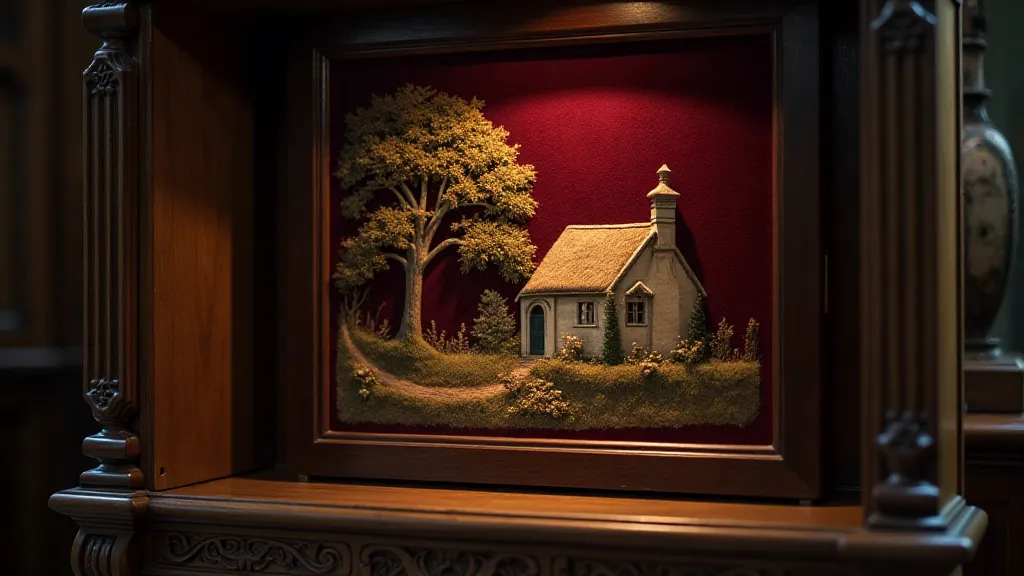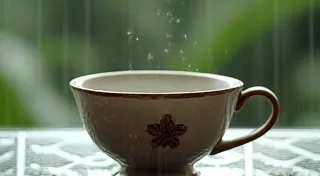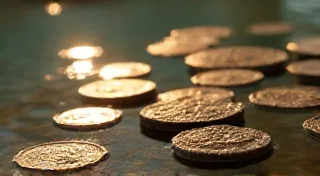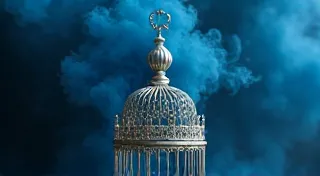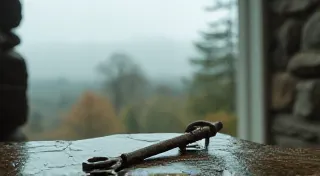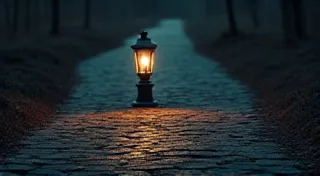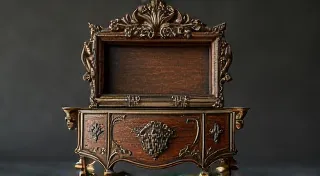The Velvet Cabinet: Crafting Miniature Worlds in Hair Art
There's a quiet reverence one feels when encountering a truly exceptional piece of Victorian hair art. It's not merely about the materials—the human hair itself, the delicate seed beads, the carefully chosen fabrics—but about the palpable sense of intention, of love, and of a time vastly different from our own. While many pieces were created as memorial tokens, mourning a lost loved one, the most ambitious, the ones that transport you utterly, are those that crafted miniature worlds within a frame. They’re like tiny, silent operas, captured within velvet and glass, and require a level of artistry that is almost breathtaking.
I remember the first time I truly understood this. I was at an antique fair, a whirlwind of chipped porcelain and tarnished silver, when I saw it. Tucked away in a corner booth, behind a stack of dusty clocks, was a hair art piece depicting a miniature landscape. It wasn’t grand, perhaps only six inches square, but the detail! Tiny trees formed from painstakingly arranged tendrils of dark brown hair, a meandering stream of blonde strands reflecting an almost ethereal light, and a miniature cottage rendered with the precision of a master miniaturist. The velvet backing, faded with age, seemed to deepen the sense of melancholy and beauty. It wasn't just a craft; it was a portal.
A History Woven in Strands
The Victorian era, of course, was defined by its elaborate mourning rituals. The loss of loved ones was a constant presence, and expressions of grief were often elaborate and highly visible. Hair art emerged as a particularly poignant form of memorialization, gaining popularity throughout the 1800s. The need to find ways to process and remember those lost was paramount, and the act of creating these intricate pieces often served as a therapeutic practice for those left behind. This era saw a fascinating interplay between grief, artistry, and tangible remembrance – a system where emotion manifested as beautifully intricate craft. Understanding the broader cultural context is key to truly appreciating these works. Indeed, the rituals surrounding Victorian hair art creation were often quite specific, involving shared mourning practices and even prescribed methods for gathering and preparing the hair itself. A deeper dive into these practices reveals just how integral hair art was to Victorian society.
While simpler forms, like lockets containing a few strands of hair, were common, the creation of detailed scenes wasn't a casual undertaking. It required a deep understanding of artistic principles, combined with the patience and skill to manipulate hair with incredible dexterity. The evolution of hair art styles also reflects broader artistic trends and technological innovations of the time. Tracing the technical genealogy provides a revealing picture of this artistic development.
The materials themselves tell a story. Human hair, naturally, was the primary medium. It was sourced from the deceased or, often, from close family members – a shared act of remembrance. Seed beads, often black or deep colors, were used to outline forms and create shading. Fabrics like velvet, silk, and occasionally lace were incorporated to create backgrounds and details. And the frames, typically made of wood or metal, were often ornate and embellished, further emphasizing the value and sentimentality of the piece.
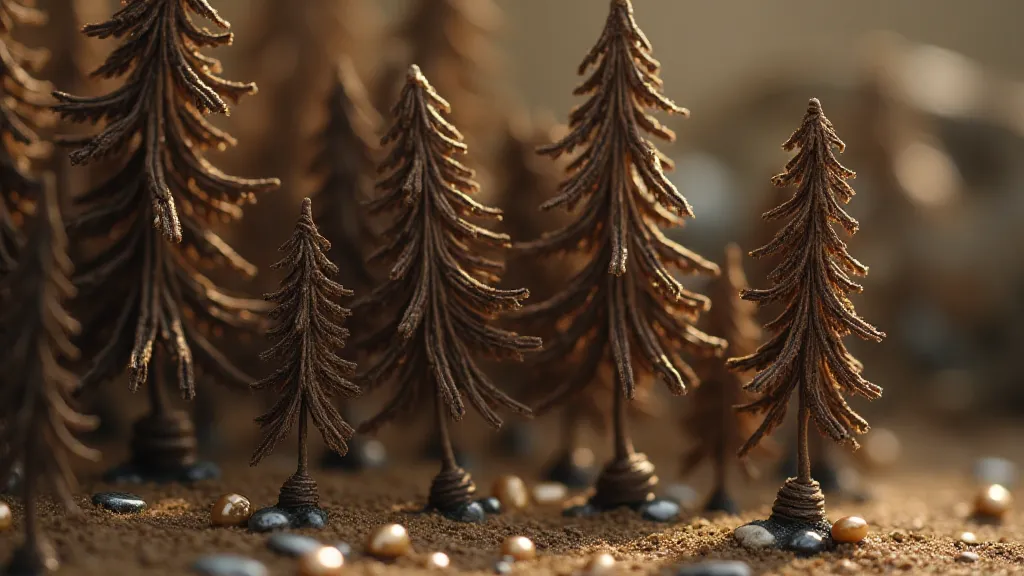
The Art of Miniature Landscapes
Creating a miniature landscape in hair art was far more complex than simply arranging strands of hair. It involved a keen eye for perspective, a deep understanding of color and texture, and an unwavering dedication to detail. Artists would often use different colors and textures of hair to create the illusion of depth and dimension. Darker hair was used for shadows and foreground elements, while lighter hair was used for highlights and background details. Tiny knots and braids were used to create the appearance of leaves, flowers, and grass. The desire to capture a sense of permanence and immortality through these works also fueled the pursuit of increasingly intricate designs, pushing the boundaries of what was considered possible with hair and seed beads.
The process required an almost obsessive level of control. The hair had to be carefully prepared – cleaned, straightened, and sometimes dyed – before it could be manipulated. Artists would employ various techniques, including weaving, braiding, knotting, and even drawing with the hair itself. They would meticulously build up layers, creating a three-dimensional effect that was both delicate and surprisingly robust. The backing, often velvet or silk, served not only as a support structure but also as a canvas for the overall design. The choice of color and texture of the backing significantly impacted the overall mood and aesthetic of the piece. This quest for detail wasn’t merely about aesthetics; it was a reflection of a cultural desire to preserve memories and represent the deceased in a tangible and lasting form.
Techniques and Tools of the Trade
While there weren't many specialized tools, the craftswoman would have utilized a few crucial implements. Fine-pointed needles were essential for knotting and securing the hair. Small scissors were used for precise trimming. A magnifying glass, almost certainly, aided in the incredibly detailed work. The hair itself needed to be meticulously prepared. Removing oils and tangles was the first step, followed by careful straightening, sometimes using a gentle heat source. Often, the hair's color would be subtly altered – darker strands might be darkened further with dyes made from natural ingredients, while lighter shades could be highlighted to add dimension. The pursuit of realism and a sense of "life" in these portraits often meant experimenting with various coloring techniques.
The “drawing” technique, used to create fine lines and details, involved attaching single strands of hair to the backing with incredibly tiny knots. This required a steady hand and an exceptional level of precision. Creating the illusion of texture was another significant challenge. Seed beads were often used to mimic the appearance of foliage, while small pieces of fabric or lace were incorporated to add depth and realism. The way the artist handled the hair – whether it was carefully woven, intricately braided, or delicately knotted – dictated the overall aesthetic and impact of the piece. These portrait artists were, in many ways, pioneers, pushing the boundaries of artistic expression with unconventional materials.
Restoration and Appreciation
Today, surviving Victorian hair art pieces are rare and highly prized. Many have suffered from the ravages of time – the hair has become brittle, the backing has faded, and the frame may be damaged. Restoration is a delicate process, requiring a deep understanding of the materials and techniques used in their creation. Simply cleaning the hair can be risky, as harsh chemicals can damage it. Gentle, natural cleaning methods are preferred.
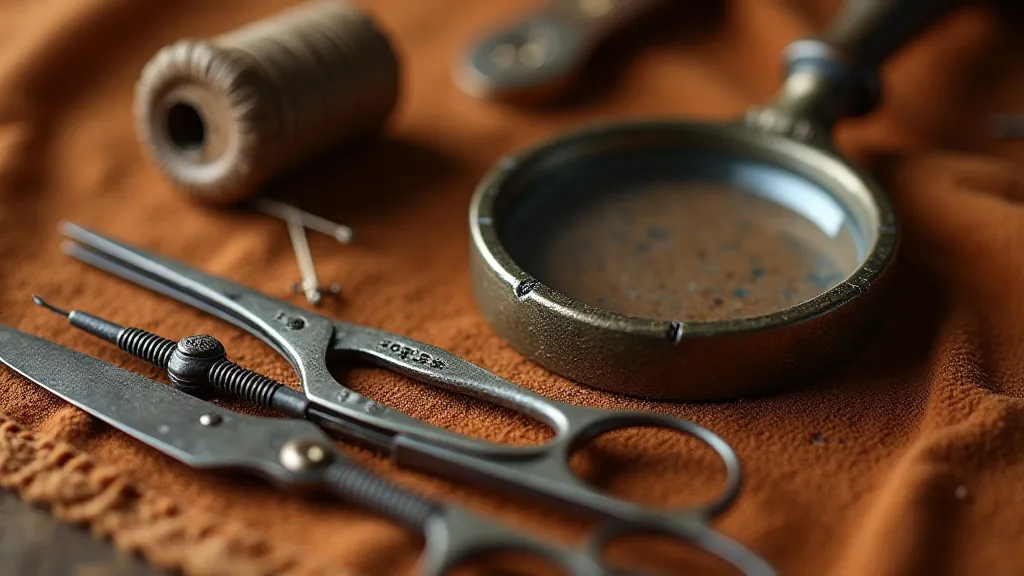
Collecting these pieces isn't just about owning a beautiful object; it's about connecting with a past era, appreciating the artistry and dedication of the creators, and understanding the profound emotional significance they held for those who commissioned them. When examining a piece, look beyond the immediate aesthetic appeal. Consider the quality of the hair used, the intricacy of the design, and the overall condition of the piece. Authenticity is also crucial; reproductions exist, though they often lack the subtle nuances and the undeniable spirit of a genuine Victorian creation. The notion of capturing a person’s essence – their spectral portrait – was a potent driving force behind these creations, and is a fascinating lens through which to view Victorian society. Exploring the Victorian quest for immortality provides deeper context on this cultural phenomenon.
A Legacy of Remembrance
The creation of miniature worlds within hair art is a testament to the power of human creativity and the enduring need to express grief and remembrance. These pieces are more than just crafts; they are tangible links to a bygone era, offering a glimpse into the lives and emotions of those who came before us. They remind us of the enduring power of memory and the beauty that can be found even in moments of sorrow. The ‘Velvet Cabinet,’ as I like to imagine these tiny landscapes, holds within it not just hair and beads, but a profound echo of love, loss, and the enduring human spirit. The fragmented nature of these surviving artifacts often presents challenges to modern scholars trying to reconstruct the complete picture of Victorian hair art techniques. Detailed analysis of these lost threads illuminates this process of reconstruction.
